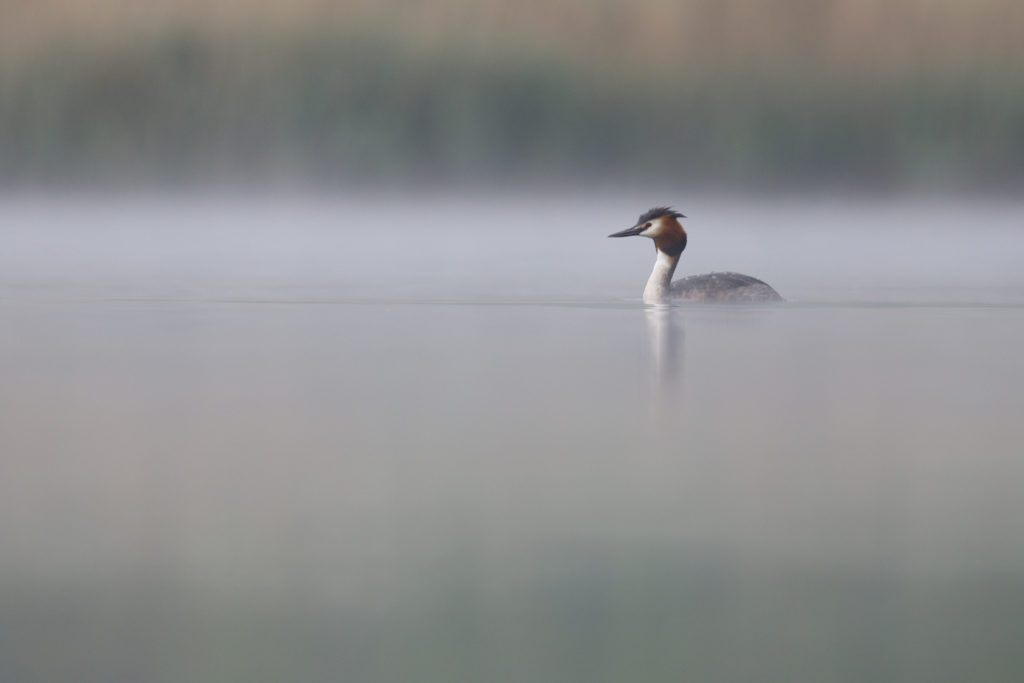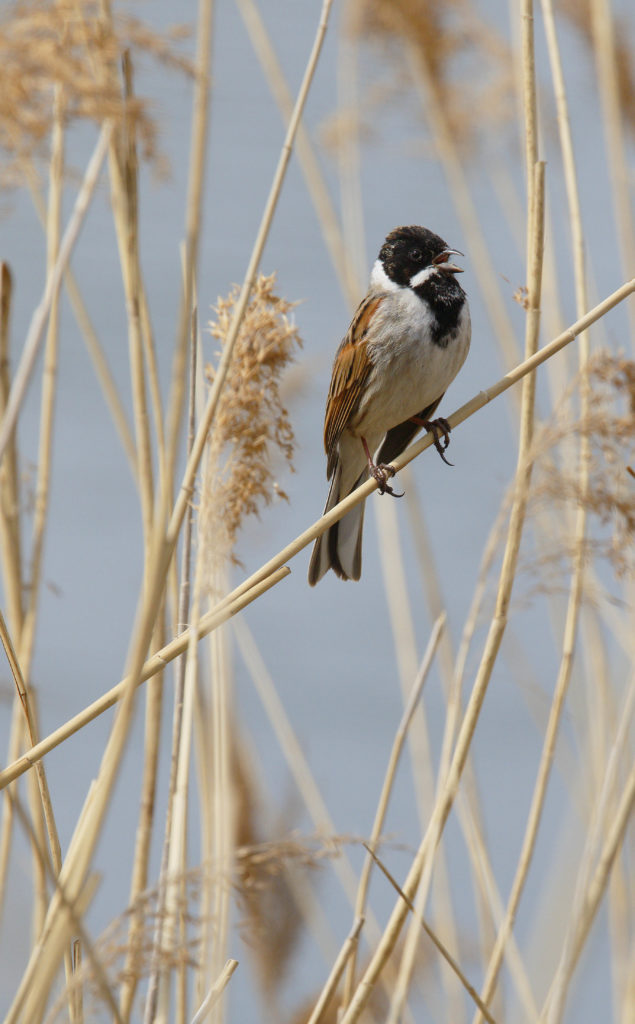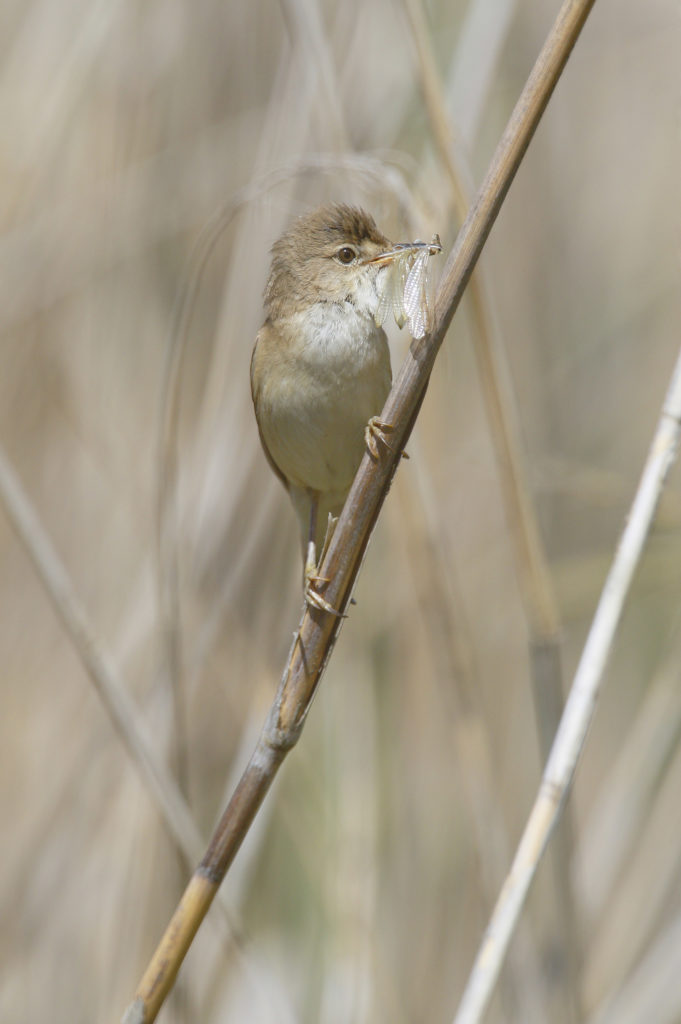Mat Bingham captures grebes, warblers and buntings in amongst Norfolk reed.

It’s warm, the first truly spring-like weekend of the year and I am crouched in the Norfolk reed. The wind chases the ripples across the lake towards me. The breeze dries my face leaving a salty taste when I lick my dry lips. The feathery seed heads of the reeds catch the breeze and gently sway, soothing my overactive mind. This is my therapy for twelve long exhausting weeks in a new job. All the hustle and bustle of jumping from one problem to another has gone, gently castaway on the wind, at least for a little while.
I am submerged in water in chest waders, as deep as I dare to go without getting wet. The edge of the lake is surrounded by the intricate call of male reed warblers trying their best to make their presence known to the females. I can’t see them even though the nearest singing warbler must be within touching distance. They hide in the shadows that are cast by the densely packed matte of reed stems.
The warblers sing through their expansive repertoire and then break cover, flying to the top of the reeds. A quick look around, before dropping down into the darkness below to repeat their avian tracklist. Maybe they fly to the top of the reeds because they grow impatient for the female’s attention.
On the tallest reeds perch male reed buntings competing with each other; their repetitive simple beat attracts the attention of the less conspicuous females. For the female reed buntings it’s all down to looks. Nature endows the most drab-looking birds with the most intricate song. The male reed buntings rely on their appearance to attract a mate. They look very dapper in their formal dress code of black hood and white collar. A female moves through the reeds taking a look at the male offerings before she makes her final decision.

To the side of me a male reed warbler darts to and fro just above the water looking for food. Favourite staples of the reed warbler are lacewings and craneflies. He crams more and more into his beak and pauses looking at me curiously, tilting his fluffed up head. I like being in the water immersed in their world. I’m not a wild swimmer, more a wild wader.

Later in the week I return to the lake at dawn to catch the early morning call of the adult cuckoos in the trees. They are looking and waiting for the chance to lay their precious egg in an unsuspecting reed warbler’s nest. I have been regularly peering into the reeds looking for the oversized egg in a nest but I haven’t found one yet. All the nests I locate only have the next generation of reed warblers nestled in them.
It’s a cloudy morning creating lovely diffuse light on the lake as I stand again chest deep in the cool water watching a great crested grebe. I have been visiting the lake on and off for several years now and it is becoming more important to me as I learn its rhythm.